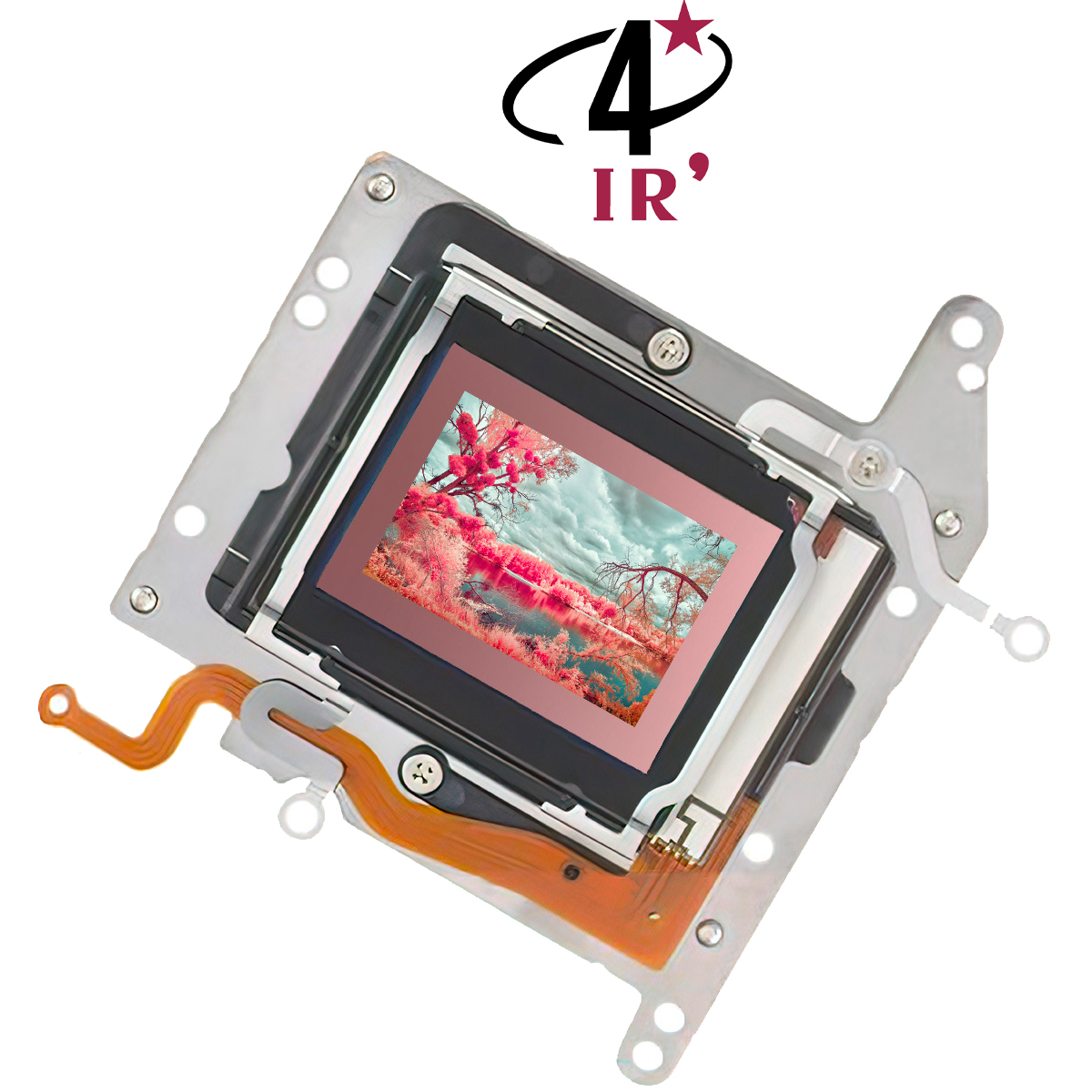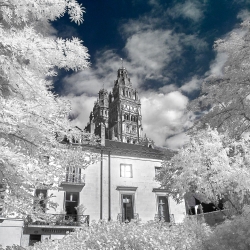NEW : We now offer conversion for infrared with the Astronomik 642BP interferential filter directly implemented on the sensor, making any lens usable (especially wide angles that vignette when a filter is placed on their front thread).
This filter is very interesting for infrared imaging as it allows enough visible light to pass through (and therefore the possibility of having images with color) while cutting off distant IRs that create the infamous unsightly hot spots on images.
Here's what Yann PHILIPPE, an eminent infrared imager who masters the acquisition and processing chain of infrared images from A to Z, says:
"At the beginning of the summer of 2022, I was fortunate to be equipped by Richard GALLI, head of EOS FOR ASTRO, with a Canon EOS 2000D device modified for infrared shooting directly at the sensor level! The advantage of this type of modification is that you don't have to carry screw-in filters in your bag, everything is done in the body! The other advantage is that this modification allows you to enjoy a very versatile spectrum: we let just enough infrared into the body for the effect to be striking (but not too much so as not to overshadow the color!), as well as enough wavelengths of the visible spectrum to have a nice tonal separation on different materials and depending on their IR reflectivity.
Enough suspense, the famous internal filter is neither a 720nm, nor a full spectrum, it is the BP 642 filter (BP as in BandPass or band pass, which means it lets a "band" of the light spectrum pass). This filter, developed by Astronomik allows for creative IR photography (landscape, portrait, etc), but is also suitable for lunar and planetary imaging as well as astrophotography for H-Alpha regions.
The filter offers a spectacle window ranging from 642nm to 842nm. It will therefore be dedicated only to IR since a large part of the visible spectrum is cut off. The distant infrareds (which are often responsible for hotspot or other light pollution inside the lens) are cut off! I have noticed that their absence gives a saturation boost to colors that are usually quite dull when IR radiation takes over, quantitatively, on the visible.

The Astronomik ProPlanet 642 BP offers you three filters in one product! Depending on your camera, the Astronomik ProPlanet 642 BP is an excellent tool for daytime IR imaging with your digital camera, or it will reduce veiling effects and improve contrast when used for lunar and planetary imaging, and finally it will be a very good low-cost H-alpha filter for beginners in deep sky astrophotography of H-alpha regions.
However, my use being mainly daytime infrared on landscape (for which the BP642 was mainly developed according to Astronomik) I was able to see its good performance in all light conditions. What struck me most was the immediate increase in saturation and contrast in the results obtained, which makes it an excellent solution for beginners! Indeed, post-production on Photoshop is greatly facilitated and becomes a pure pleasure: with immediate results and an enriched range of possibilities (due to the subtle balance between the visible and the IR, the manipulation of the rendering in false colors via the layer mixer becomes really creative!).
Richard GALLI uses Astronomik equipment for his modding and offers you the possibility to have your camera converted with this particular filter, whether to introduce you to infrared to start under the best conditions or to rediscover the pleasure of a unique and multiple rendering at the same time (which was my case!)"
Here are some images taken by Yann, with a modified EOS 2000d 642BP, which clearly show the variety and subtlety of the different tones that can be obtained with a single camera and a single filter:
Find Yann PHILIPPE's blog here: infrarouge.photo


































